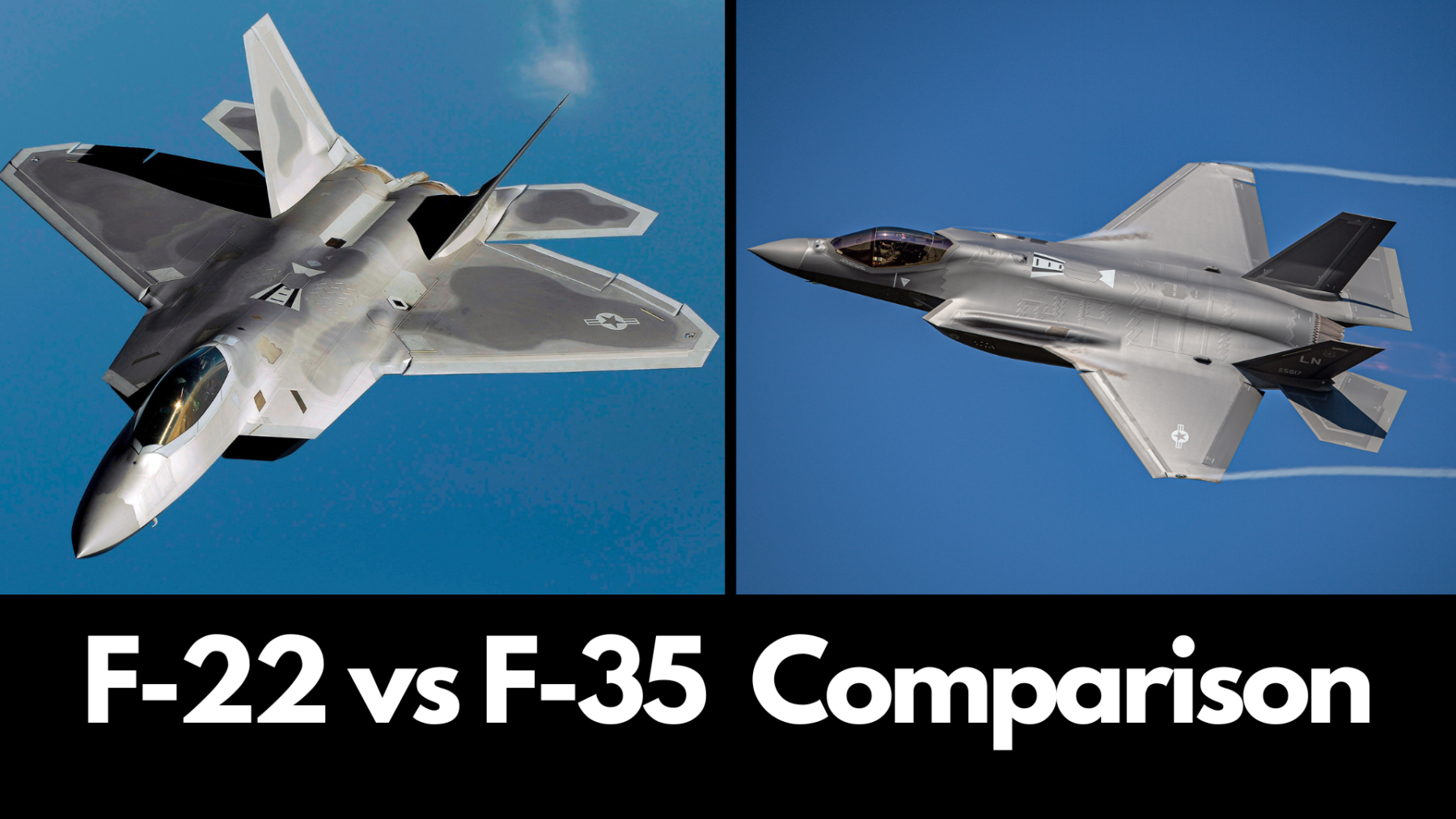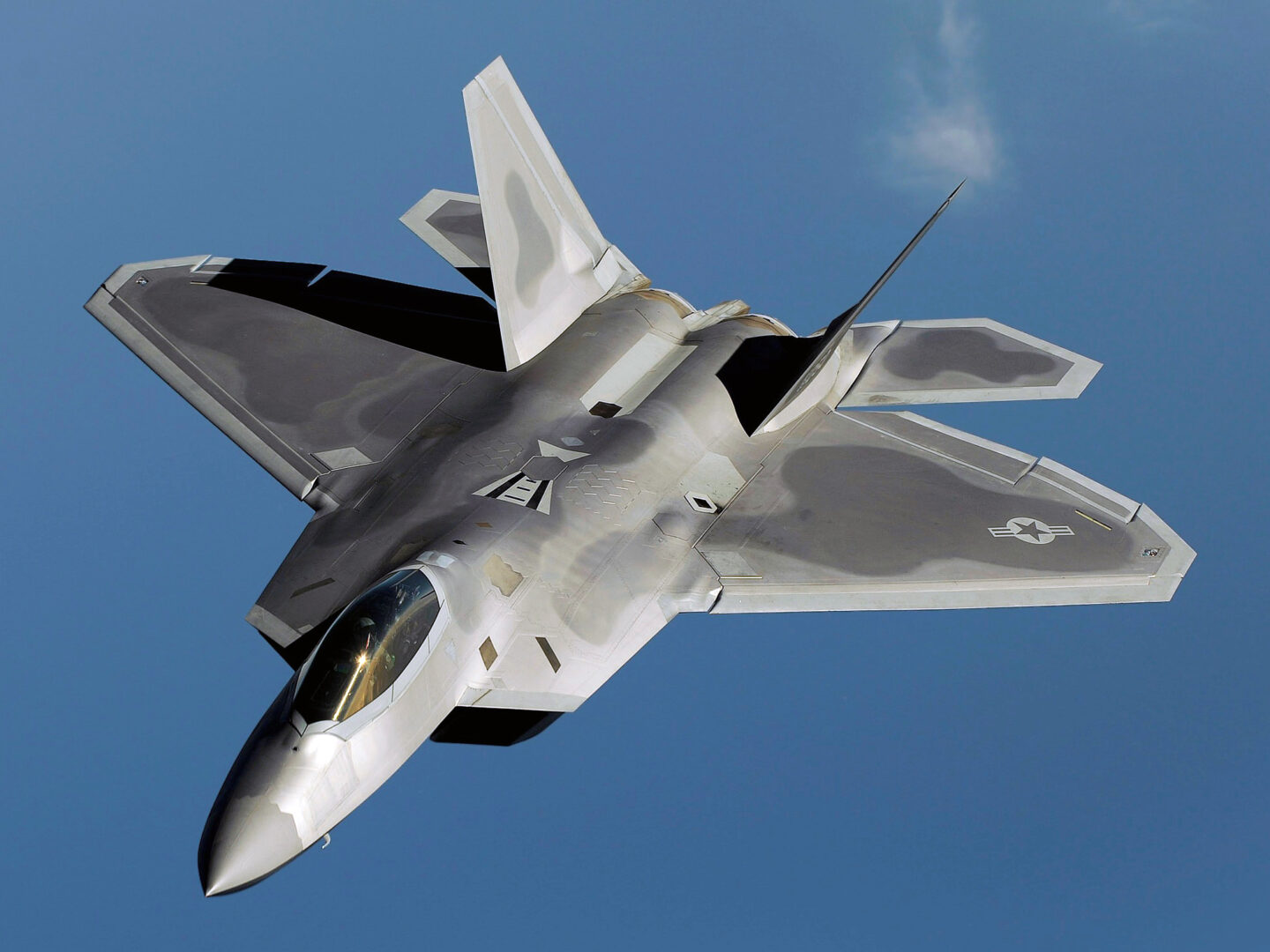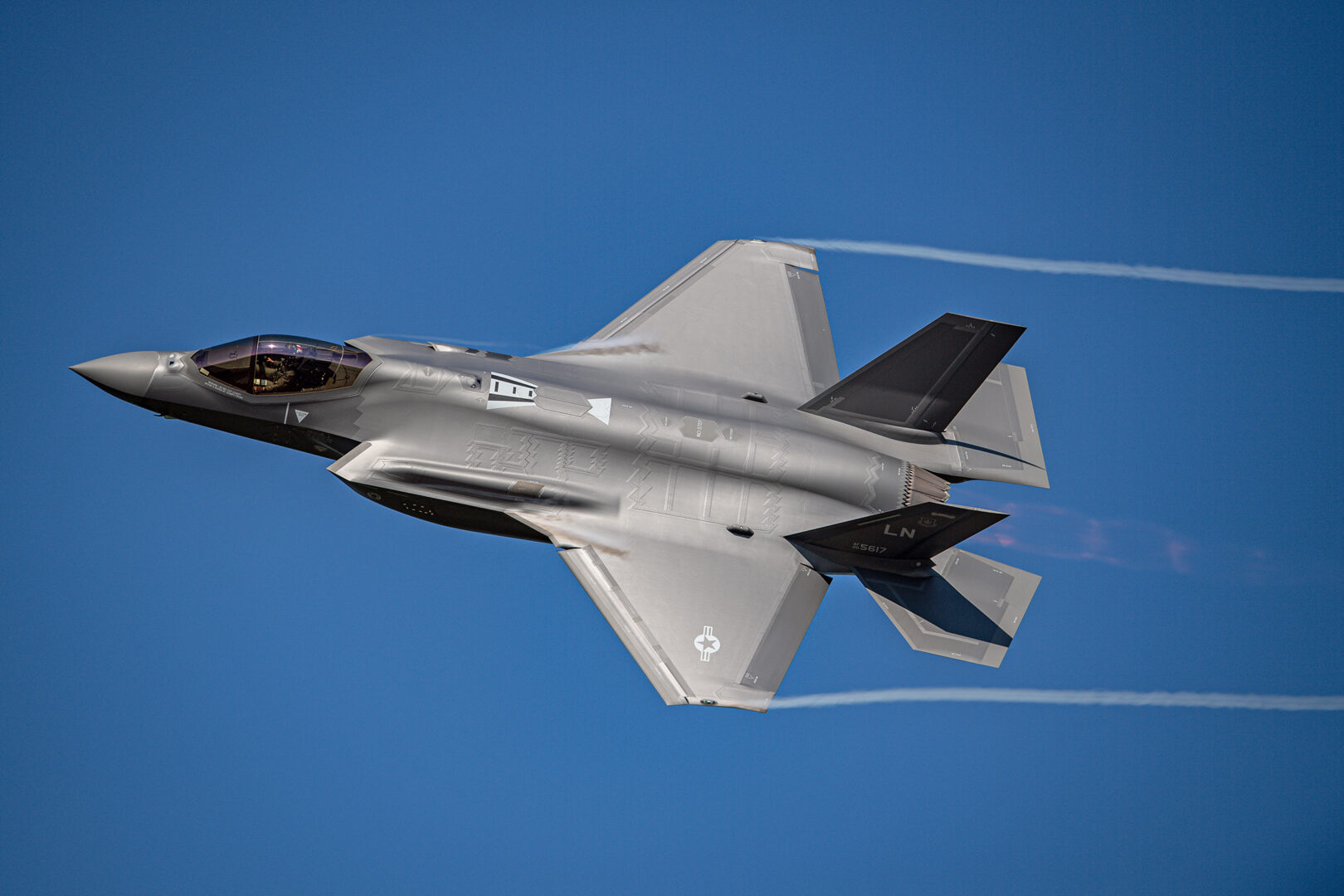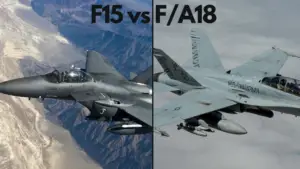F22 Raptor vs F35 Lightning II: In Depth Comparison

In a world where aerial prowess dictates global power, the Lockheed Martin F-35 Lightning II and F-22 Raptor have recently soared into the media spotlight.
These aircraft, reminiscent of the F-18’s cinematic fame in “Top Gun: Maverick,” are the true faces of modern air combat. Their sleek, futuristic designs hint at capabilities far beyond what’s been seen in theatres.
The F-35 and F-22, despite sharing the skies for nearly two decades, still hold closely guarded secrets, with many of their features remaining classified.
While outwardly similar, both aircraft serve distinctly different purposes in the US military’s arsenal. This article delves into these two marvels of aviation technology, dissecting their roles, capabilities, and unique niches in modern warfare’s theatre.
Comparison


F-22 Raptor vs F-35 Lightning II Dogfight


Read also: F-15 vs FA-18 Comparison
Futuristic Design and Stealth
At first glance, the F-22 Raptor and F-35 Lightning II could be mistaken for siblings, with their sharp contours and stealthy frames reminiscent of something from a distant, advanced future.
Their designs, heavily influenced by stealth technology, make them nearly invisible to enemy radars, akin to shadows flitting through the sky. Both crafts, however, are more than just their stealthy exteriors.
The F-22’s design, focused on minimal radar cross-section, allows it to slip through enemy defences unnoticed. On the other hand, the F-35 integrates its stealth with a broader set of capabilities designed to be adaptable across various mission types. The meticulous construction of these aircraft involves advanced materials and radar-absorbent paint, ensuring their stealth remains uncompromised.
Distinct Combat Roles
While similar in appearance, the F-22 Raptor and F-35 Lightning II are designed for distinctly different roles on the battlefield. The F-22 is the undisputed champion of air-to-air combat, a position it performs with unmatched efficiency and stealth.
It’s engineered to dominate the skies, taking out enemy aircraft precisely and maintaining air superiority for U.S. forces. The F-22’s capabilities are so advanced that it often engages the enemy without ever being detected, striking from the shadows with lethal accuracy.
In contrast, the F-35 Lightning II is the epitome of versatility. It’s a multi-role fighter, adept at switching between air-to-air combat, ground attacks, and intelligence-gathering missions.
The F-35 is designed to replace multiple specialized aircraft, making it an invaluable asset in various military operations. Its adaptability and broad mission scope make it a key player in the U.S. military’s strategy, capable of responding to multiple threats and challenges in modern warfare.
The F-22 Raptor: Unmatched in the Skies
The F-35 Lightning II, designed as a multirole fighter, is a testament to modern military versatility. It’s like a Swiss Army knife in the skies, capable of adapting to many combat scenarios.
The U.S. Air Force envisions the F-35 as the successor to various fighter and ground attack aircraft, including the F-16, F-18, and A-10. Its flexibility extends to replacing the Harrier jump-jet in Marine Corps operations. The F-35’s design philosophy revolves around its ability to handle diverse mission requirements, from air combat to ground support and intelligence-gathering.
This adaptability is critical to its role as a backbone in the U.S. military and allied forces. Its advanced avionics, stealth capabilities, and an array of weaponry allow it to excel in multiple positions, ensuring it can respond effectively to modern warfare’s dynamic and evolving nature.
The F-35 Lightning II: The Multirole Maverick
The F-22 Raptor and F-35 Lightning II stand as crowning achievements of Lockheed Martin(1), each with a storied past that speaks to the United States Air Force’s relentless pursuit of aerial dominance.
The F-22’s inception responded to the world’s burgeoning need for an air superiority platform that could operate undetected, a stealthy sentinel capable of preemptive strikes and unmatched defense.
Its development was a meticulous symphony of precision engineering, resulting in a fifth-generation fighter jet that redefined the parameters of military aviation.
Concurrently, the F-35 Lightning II emerged from the Joint Strike Fighter program(2) as a multi-faceted blade designed to cut through the complexities of modern warfare with its multirole combat aircraft capabilities.
This aircraft was not just built; it was forged in the fires of tactical necessity, embodying the versatility required for the United States to maintain its global defense posture.
Historical Context and Development
The F-22 Raptor and F-35 Lightning II stand as crowning achievements of Lockheed Martin(1), each with a storied past that speaks to the United States Air Force’s relentless pursuit of aerial dominance.
The F-22’s inception responded to the world’s burgeoning need for an air superiority platform that could operate undetected, a stealthy sentinel capable of preemptive strikes and unmatched defense.
Its development was a meticulous symphony of precision engineering, resulting in a fifth-generation fighter jet that redefined the parameters of military aviation.
Concurrently, the F-35 Lightning II emerged from the Joint Strike Fighter program(2) as a multi-faceted blade designed to cut through the complexities of modern warfare with its multirole combat aircraft capabilities.
This aircraft was not just built; it was forged in the fires of tactical necessity, embodying the versatility required for the United States to maintain its global defense posture.
Design Philosophy: Stealth and Beyond
The F-22 Raptor and F-35 Lightning II are more than mere feats of aeronautical engineering; they embody a design philosophy that intertwines stealth with other combat capabilities.
Lockheed Martin’s pioneering stealth technology cloaks these tactical aircraft, reducing their radar cross-section to that of a sparrow in a storm. Yet, stealth is just the beginning.
The aerodynamic profiles of these jets are sculpted for minimal drag and maximum maneuverability, allowing them to cut through the air with predatory grace.
The F-22, with its thrust vectoring prowess, redefines agility in the skies, enabling it to perform aerial ballets that leave adversaries grasping at shadows.
The F-35, the other hand, extends the stealth paradigm into a multirole platform, bringing advanced fighter jet capabilities to a broader spectrum of missions.
This includes ground attack roles where the aircraft’s ability to operate undetected provides a tactical edge akin to a chess grandmaster’s unseen gambit.
Avionics and Systems Integration
The cockpits of the F-22 and F-35 are sanctuaries of technological marvel, where avionics and systems integration converge to create an unparalleled fusion of man and machine.
The pilots of these aircraft are endowed with god-like situational awareness, thanks to sensor fusion that feeds a constant stream of battlefield data into their visors.
This integration allows for a seamless flow of information, turning pilots into strategic maestros conducting an orchestra of stealth features, supersonic speed, and precision weaponry.
In the F-22, avionics are fine-tuned for air superiority, giving pilots the upper hand in beyond-visual-range (BVR) combat scenarios.
The F-35’s systems, however, are a testament to its role as a multirole combat aircraft, with a versatility that supports a wide array of mission types, from tactical strikes to reconnaissance.
One might be surprised to learn that the F-35’s Helmet Mounted Display System costs upwards of $400,000 per unit, a price that reflects the critical role this piece of technology plays in the multirole mission adaptability of the jet.
Performance Metrics: Speed, Agility, and Power
Speed, agility, and power are the triads upon which the F-22 Raptor and F-35 Lightning II’s performance metrics rest.
The F-22’s ability to supercruise at speeds exceeding Mach 1.5 without afterburners is a testament to its raw power and aerodynamic efficiency.
Its agility is further enhanced by thrust vectoring, allowing for maneuvers that defy the laws of physics as we know them.
The F-35, while not as fast in sheer speed, balances the equation with its STOVL (Short Takeoff and Vertical Landing) capabilities and an agility profile tailored for various combat scenarios.
Its thrust-to-weight ratio is meticulously calculated to ensure that the aircraft can handle the rigors of multirole missions, whether it’s a supersonic dash to intercept an enemy or a stealthy ingress into hostile territory.
An often-overlooked detail is that both aircraft require tremendous power not just for propulsion but also to run the myriad of advanced systems on board, from radar to the life-support systems that keep the pilot combat-ready.
Combat Capabilities: Air-to-Air vs. Multirole Missions
The F-22 Raptor’s combat capabilities are laser-focused on achieving and maintaining air superiority. Its advanced weaponry and stealth technology make it the apex predator of the skies, capable of engaging enemy aircraft before they even know it’s there.
The F-22’s role in air-to-air combat is akin to a shadow that strikes without warning, a position it performs with lethal proficiency.
In contrast, the F-35 Lightning II’s combat capabilities are a tapestry of versatility. It is designed to excel across a spectrum of air-to-air and multi-role missions, from delivering precision strikes against ground targets to conducting electronic warfare.
The F-35 adapts to the mission’s needs, providing close air support or engaging in BVR engagements.
The multirole nature of the F-35 is its ability to carry a diverse array of ordnance, from the AIM-120 AMRAAM for air engagements to the Paveway series of bombs for ground targets, showcasing its adaptability in combat roles.
What is the Difference Between the F-22 and the F-35?
While both fifth-generation fighter jets, the F-22 Raptor and F-35 Lightning II, diverge in their core missions.
The F-22 is unrivaled in air superiority and is designed to secure the skies with its advanced stealth and combat capabilities. Its role is clear: to engage and eliminate aerial threats, ensuring the dominance of the United States Air Force in any engagement.
The F-35’s design philosophy, however, is rooted in versatility. It is a multirole combat aircraft capable of executing various missions with stealth, agility, and advanced avionics. F-35 is a jack-of-all-trades equipped to support ground forces, engage in air combat, and conduct surveillance operations.
The difference between the two is best encapsulated by their operational environments: the F-22 is the guardian of the skies. At the same time, the F-35 is the adaptable force multiplier, ready to respond to the dynamic demands of modern warfare.
Which one is Better?
Asking which aircraft is better, the F-22 Raptor or the F-35 Lightning II, invites a debate as complex as the jets.
The F-22’s superior air-to-air combat capabilities make it the preferred choice for securing air superiority. Its stealth features and sensor fusion allow it to engage the enemy on its terms, often without retaliation.
The F-35, with its multirole adaptability, shines in its ability to undertake various missions with a single platform. Its value lies in its versatility and the cost savings it offers by potentially replacing multiple specialized aircraft.
The answer to which is better depends on the mission at hand. For air dominance, the F-22 leads the charge. For a multi-faceted approach to modern warfare, the F-35 stands ready to answer the call.
F-22 vs F-35 Radar Cross Section
The radar cross-section (RCS) is a critical factor in the stealth capabilities of the F-22 Raptor and F-35 Lightning II.
The F-22 boasts an RCS comparable to a steel marble, making it a ghost on enemy radars. Its design and materials are optimized to deflect radar waves, ensuring it remains an enigma in hostile skies.
The F-35, while not as stealthy as the F-22, still possesses a significantly reduced RCS, especially compared to legacy fighter jets. Its stealth is designed for first-look, first-strike capabilities, allowing it to engage targets and retreat before the enemy can mount a significant defense.
The RCS of both aircraft is a marvel of engineering, reflecting the pinnacle of stealth technology and the relentless pursuit of invisibility in aerial combat.
F-22 vs F-35 Price
The F-22 Raptor and F-35 Lightning II are titans of military aviation, yet their costs reflect differing strategic investments.
The F-22, with its unmatched air combat capabilities and stealth technology, boasts a unit cost of about $150 million.
This steep price is due to its advanced avionics, materials, and limited production of 195 jets, which ceased as strategic focus shifted.
Conversely, the F-35 Lightning II presents a more economical figure, with its unit cost hovering around $89 million for the conventional takeoff and landing variant.
The F-35’s affordability is partly due to a larger production scale, with over 3,000 units planned, leveraging economies of scale and international partnerships to distribute costs.
Operational expenses further distinguish the two, with the F-22’s per-flight-hour cost surpassing that of the F-35, attributed to its intricate maintenance and the need for specialized support.
The F-35 benefits from a design that reduces lifetime costs through maintenance efficiencies and a modular upgrade approach.
F-22 vs F-35: Who Would Win?
The outcome would hinge on numerous variables in a hypothetical engagement between the F-22 Raptor and F-35 Lightning II.
The F-22’s design as an air superiority fighter gives it the edge in aerial combat, with its stealth, speed, and agility designed for dominance in this arena.
The F-35’s strength lies in its versatility and advanced systems integration, which could provide advantages in a multi-domain battle space. Its sensor fusion and networked capabilities allow for a comprehensive battlefield picture, which could be pivotal in a confrontation.
Ultimately, the victor in such a matchup would depend on the specific circumstances of the engagement, with each aircraft bringing its unique strengths to the fray.
Wrapping up
The F-22 Raptor and F-35 Lightning II represent the zenith of current aerial warfare capabilities but also lay the groundwork for the future.
As technology advances, so will the features and capabilities of these aircraft, with upgrades to stealth, avionics, and weapons systems ensuring their relevance in the ever-evolving theater of war.
The future of aerial warfare will likely see these jets becoming part of a networked force, operating in concert with unmanned systems and leveraging artificial intelligence to enhance their effectiveness.
The F-22 and F-35 will continue to be pivotal assets, evolving to meet the challenges of tomorrow’s conflicts.



